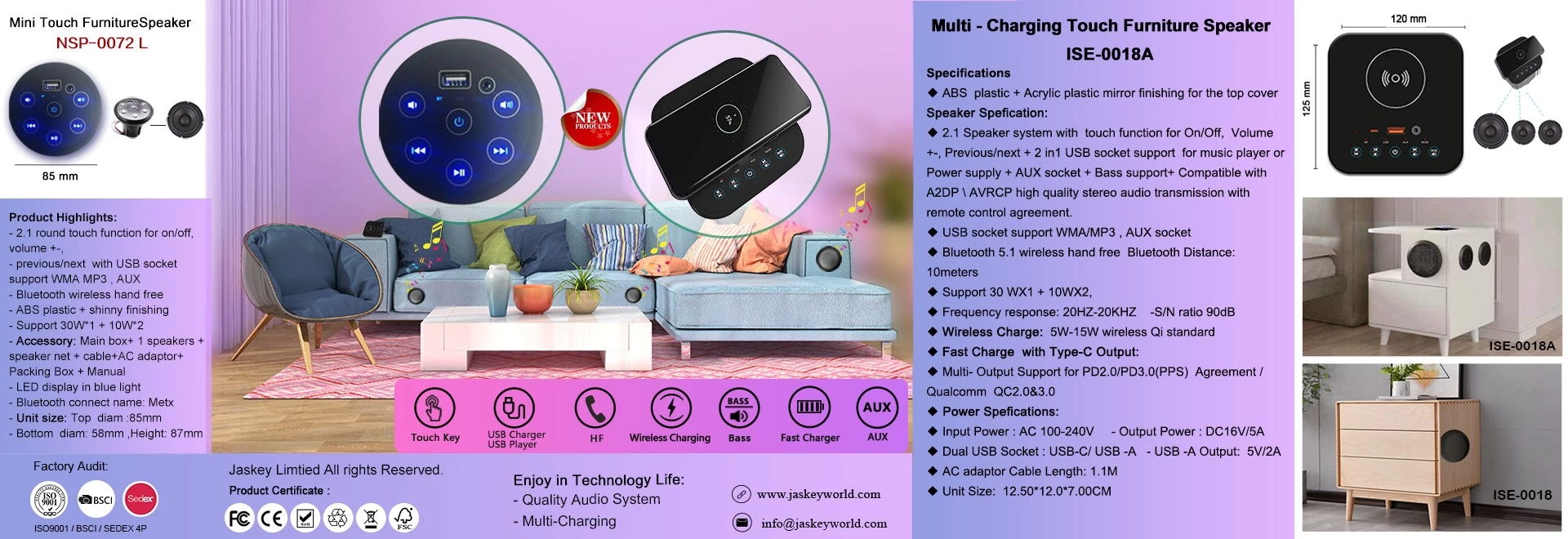How to adjust the tone of the mini speaker amplifier system?
Generally, the mini speaker amplifier sound effect debugging of a performing arts hall is divided into two aspects, the first is the mini speaker amplifier system, and then the band and the vocals.
Mini speaker amplifier system debugging purpose: first create a nice platform.
Putting aside the adjustment steps of speaker polarity detection and phase correction, assuming that these two are already done, let's adjust the tone.
The straight curve does not represent the graceful tone. Many friends like to use the spectrum analyzer or spectrum analysis software to make the reference of the equalization adjustment. This method is intuitive, but it should be noted that the straight curve does not represent the graceful tone, because human ears The listening curve is not straight, and the mini speaker amplifier system's tone adjustment ultimately depends on the ears of the tuner.
How to do it?
I usually do this, first play a CD that I am familiar with, and listen to the difference between the live mini speaker amplifier sound and my own impression. Generally speaking, there are some differences between live mini speaker amplifier sound reinforcement and my own impression.
1. Tone adjustment first starts from the low frequency
Because the low frequency energy is relatively large, it has a certain masking effect on the middle and high frequency.
My rule of dealing with bass tone is: first make sure it is clean, and then consider other things.

(1) Common "buzzing" sound of mini speaker amplifier
Usually there will be some low-frequency resonance mini speaker amplifier sound in most places, which is generally expressed as a "buzzing" sound of mini speaker amplifier around the ear. This kind of mini speaker amplifier sound will seriously damage the low-frequency mini speaker amplifier sound quality and make the low-frequency mini speaker amplifier sound muddy and unclean. The equalizer first attenuates the frequency bands below 40 or 50 Hz (for general music or band performance, 50 Hz is enough), and then pull down the low-frequency break faders one by one, and pull to a certain fader, "buzzing" After the mini speaker amplifier sound fades or disappears, keep this position.
At this time, you will find that the low frequency is much cleaner all at once.
(2) Tone adjustment
On this basis, you can adjust some timbre, for example, to increase the fullness of the low frequency, you can attenuate 80 Hz appropriately, so that due to the reduction, the energy in the middle of the low frequency and the energy in the lower part of the low frequency will be highlighted, and the natural feeling is full. Some, you need to increase the intensity to make the bass "cool", you can do some attenuation between 50 and 60 Hz, reduce the energy in the lower part of the low frequency, can make the bass speed faster, and the natural mini speaker amplifier sound becomes more cool.
After repeated adjustments like this, after finding a balance point, you can generally get fast, flexible, and clean bass effects.
(3) Tone adjustment for full frequency
After finishing the bass, if you don't adjust the full frequency, you will generally find that the full frequency mini speaker amplifier sound monogram is more transparent than before. This is the role of the masking effect. At this time, you can find that the original inconspicuous details begin to show up.
Similarly, for the full-range tone adjustment, start from the mid-low frequency, because compared to the mid-high frequency, the mid-low frequency has enough energy. If it is not done well, the mini speaker amplifier sound will generally be blurred.
To deal with the low and medium frequencies, first start by making it clean. Generally, there are 3 frequencies that affect the definition of the medium and low frequencies: 200, 400, and 600 Hz.
Around 200 Hz: It is generally expressed as a "boom" sound of mini speaker amplifier, which affects the clarity of the human voice. Do some attenuation to make the mini speaker amplifier sound clearer.
Around 400 Hz: Generally, it affects the mini speaker amplifier sound strength. When there are more items in this period, the mini speaker amplifier sound will appear a little "scattered", and a little attenuation can make the mini speaker amplifier sound solid.
600 Hz: If there are too many things in this section, the middle and low frequencies will feel a bit "dirty". After a little attenuation, the middle and low frequencies will become purer.
After doing these hands and feet, you will generally feel that the low and mid frequencies have become very clear and a little refreshing.
1. Tone adjustment first starts from the low frequency
Because the low frequency energy is relatively large, it has a certain masking effect on the middle and high frequency.
My rule of dealing with bass tone is: first make sure it is clean, and then consider other things.
(1) Common "buzzing" sound of mini speaker amplifier
Usually there will be some low-frequency resonance mini speaker amplifier sound in most places, which is generally expressed as a "buzzing" sound of mini speaker amplifier around the ear. This kind of mini speaker amplifier sound will seriously damage the low-frequency mini speaker amplifier sound quality and make the low-frequency mini speaker amplifier sound muddy and unclean. The equalizer first attenuates the frequency bands below 40 or 50 Hz (for general music or band performance, 50 Hz is enough), and then pull down the low-frequency break faders one by one, and pull to a certain fader, "buzzing" After the mini speaker amplifier sound fades or disappears, keep this position.

At this time, you will find that the low frequency is much cleaner all at once.
(2) Tone adjustment
On this basis, you can adjust some timbre, for example, to increase the fullness of the low frequency, you can attenuate 80 Hz appropriately, so that due to the reduction, the energy in the middle of the low frequency and the energy in the lower part of the low frequency will be highlighted, and the natural feeling is full. Some, you need to increase the intensity to make the bass "cool", you can do some attenuation between 50 and 60 Hz, reduce the energy in the lower part of the low frequency, can make the bass speed faster, and the natural mini speaker amplifier sound becomes more cool.
After repeated adjustments like this, after finding a balance point, you can generally get fast, flexible, and clean bass effects.
(3) Tone adjustment for full frequency
After finishing the bass, if you don't adjust the full frequency, you will generally find that the full frequency mini speaker amplifier sound monogram is more transparent than before. This is the role of the masking effect. At this time, you can find that the original inconspicuous details begin to show up.
Similarly, for the full-range tone adjustment, start from the mid-low frequency, because compared to the mid-high frequency, the mid-low frequency has enough energy. If it is not done well, the mini speaker amplifier sound will generally be blurred.
To deal with the low and medium frequencies, first start by making it clean. Generally, there are 3 frequencies that affect the definition of the medium and low frequencies: 200, 400, and 600 Hz.
Around 200 Hz: It is generally expressed as a "boom" sound of mini speaker amplifier, which affects the clarity of the human voice. Do some attenuation to make the mini speaker amplifier sound clearer.
Around 400 Hz: Generally, it affects the mini speaker amplifier sound strength. When there are more items in this period, the mini speaker amplifier sound will appear a little "scattered", and a little attenuation can make the mini speaker amplifier sound solid.
600 Hz: If there are too many things in this section, the middle and low frequencies will feel a bit "dirty". After a little attenuation, the middle and low frequencies will become purer.
After doing these hands and feet, you will generally feel that the low and mid frequencies have become very clear and a little refreshing.










